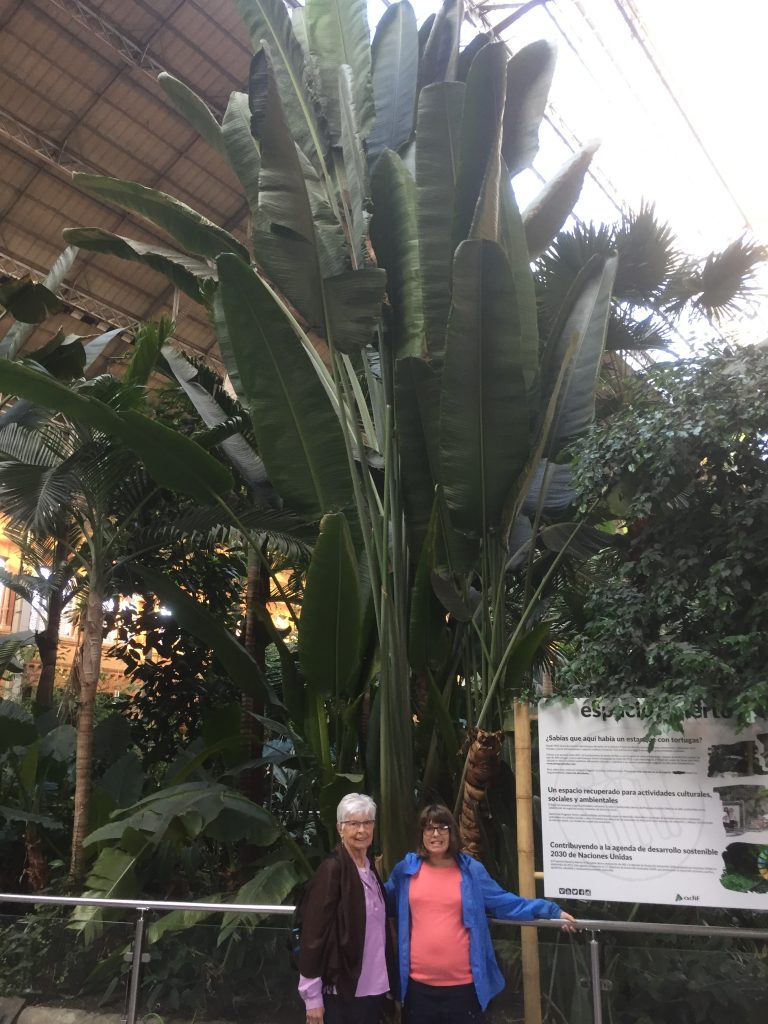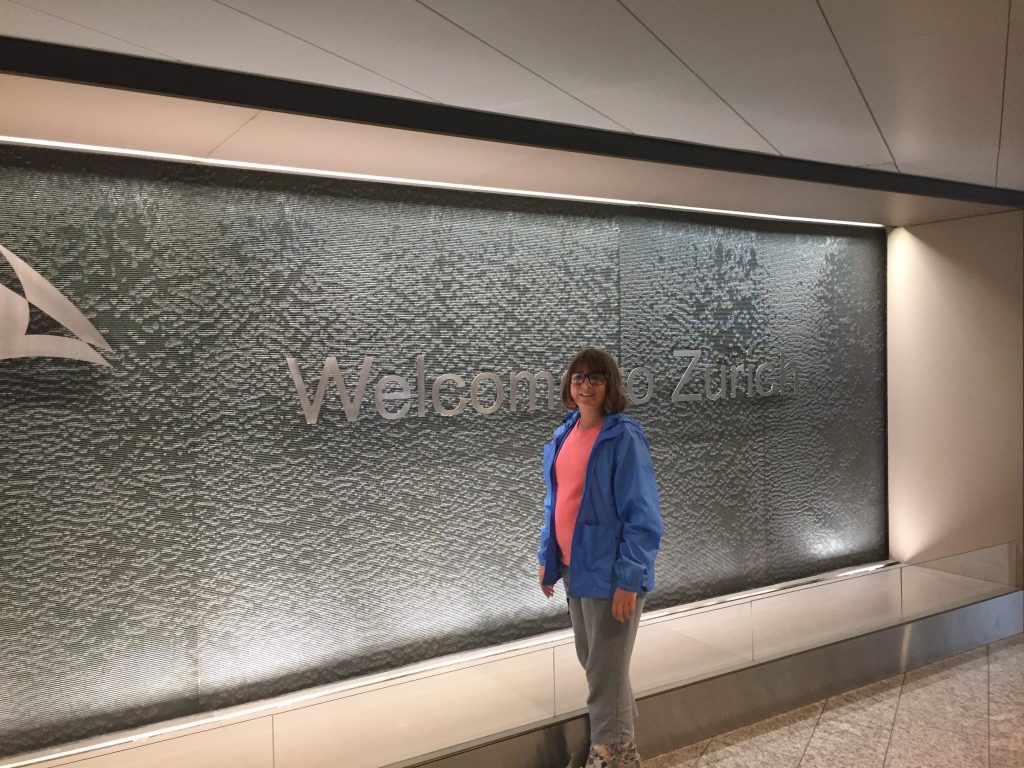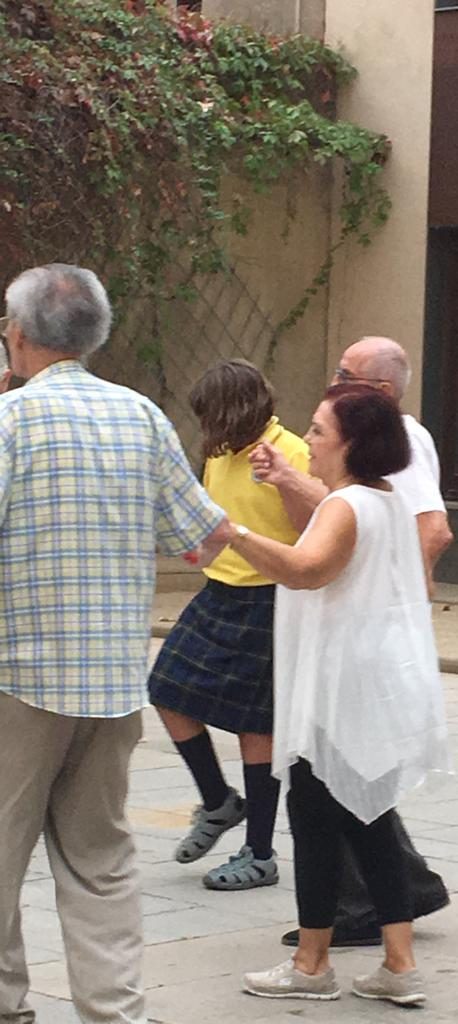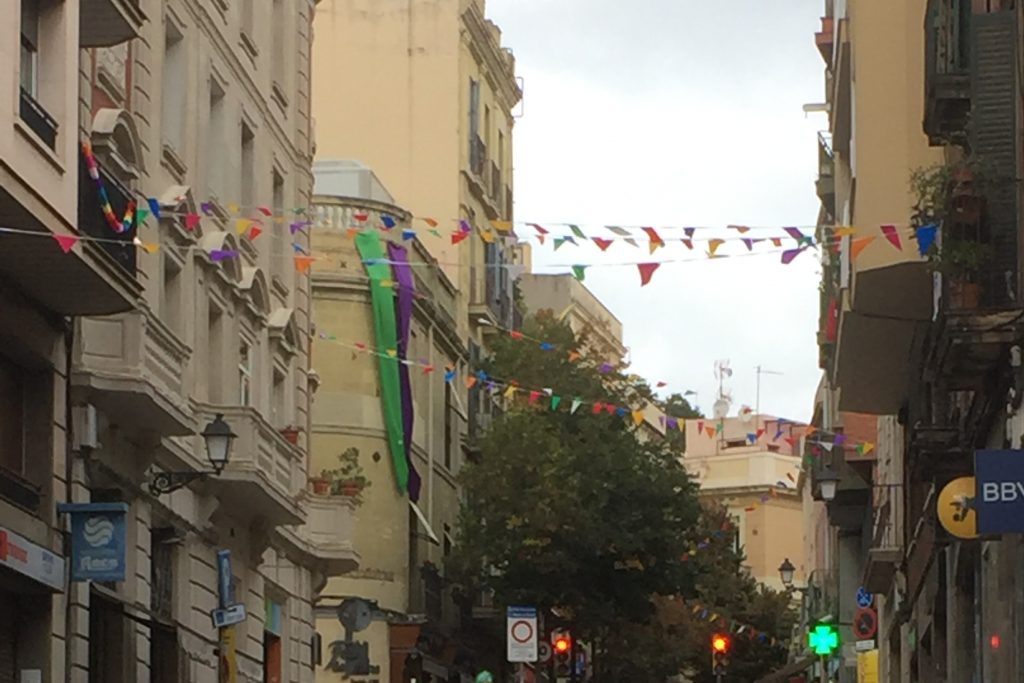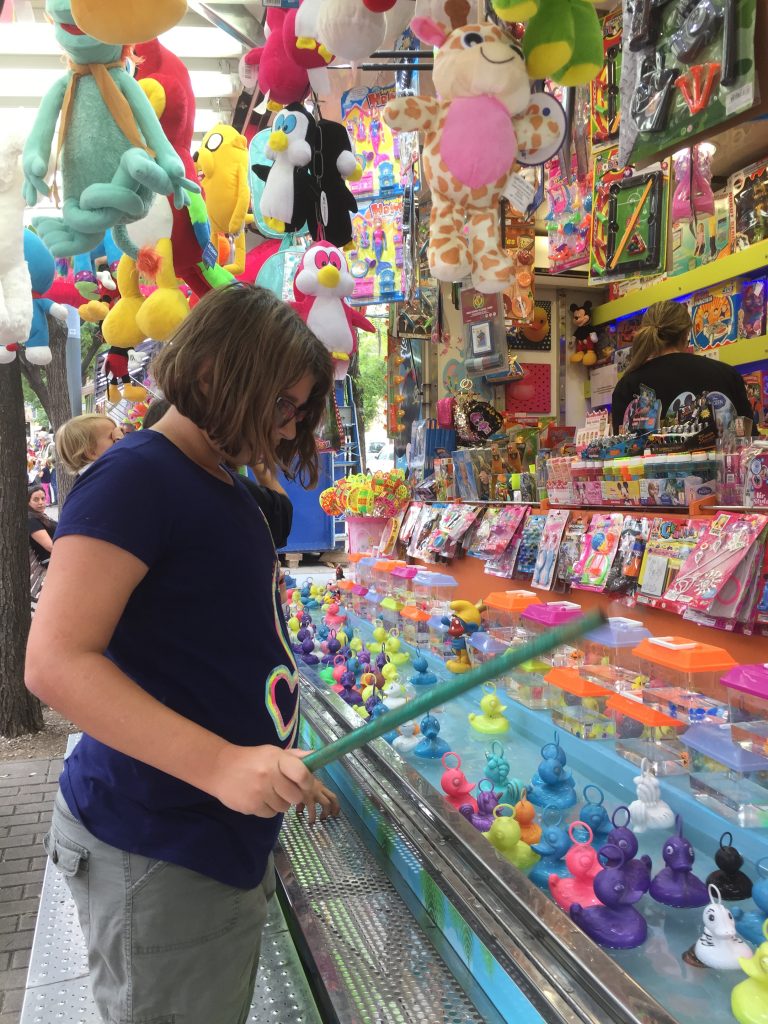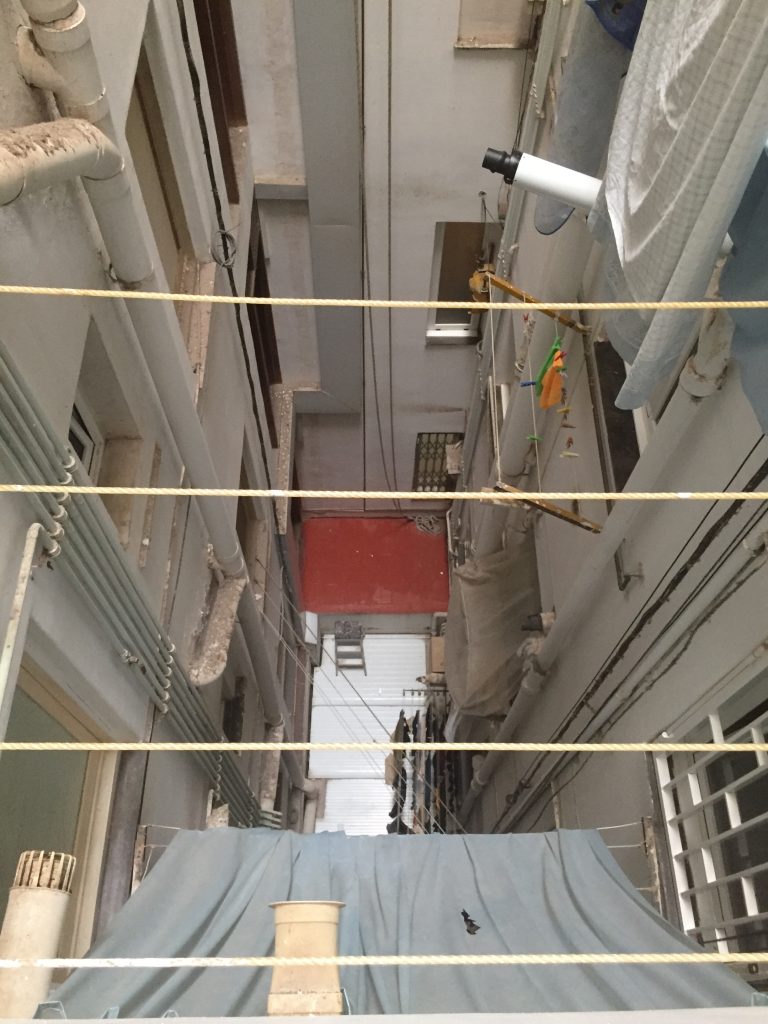Much to our surprise, Halloween is also celebrated here in Barcelona. YAY! So, as with every year since she was born, Allita will have a homemade costume to wear to school and, eventually, trick-or-treating. We started early with our efforts for this year’s costume creation. Allita designed a dragon costume for herself – researching the best ideas, recommendations and pinterest posts for creating it. We assembled the majority of the necessary raw materials and supplies by purchasing most items from the bazar (Dollar Tree) or the hardware store. One or two things were donated by local vendors who were friendly enough to share when the craft was fully explained (for example, the dry cleaner who provided two wire coat hangers with the stipulation that she be allowed to see the end result). Such is the generosity of the people of Sarria.

We began with the mask, which I feared was going to be the most time-consuming and difficult of the accessories to be manufactured. Since we only had two weekends to get this work done, I thought we should start with the hard part first. The biggest hurdle with masks is that Allita wears glasses. She must wear them in order to be able to see how to walk properly so going without is not an option.
This year, we decided to use safety goggles that fit over her prescription glasses and a half-mask form. We hot glued the form to the goggles with them on her face so that the eye holes would be perfectly positioned. I will freely admit right now that she did burn her hand on the hot glue but that was only because she couldn’t be still long enough for it to cool completely. Then, for the horns, we disassembled two paper towel roll cores and twisted them into a tight point with more hot glue to hold them together. Eventually, we affixed the horns to the mask with glue, pins and duct tape.

Mask and horns – bare bones 
Assembled skeleton
Next, we used hot glue and craft foam paper to cover the mask and create scales. I will also admit here that we both got a number of first degree burns during this assembly process and we used almost all of our glue! To finish the horns, we used black duct tape in small pieces to layer around and add dimension. I’m always impressed with Allita’s ideas and suggestions when we are doing these type of arts and crafts.

Finally, we used metallic paint (silver and green) to add some dimension to the craft foam and make the mask look a little more “life-like”. We used a foam brush as well as some standard art paint brushes for the fine work. This whole process took one entire day to complete – not because I couldn’t do it faster but because we worked together and at Allita’s pace.

The next step was the tail. We had some ideas from online research and other costumes we’d seen in stores. Allita knew she wanted scales and she knew that it needed to somehow attach to her body. Ultimately, we used craft foam – one light green piece for the underside and one black piece for the topside – to make the basic tail shape. Then we covered the edges with black duct tape to hold the two pieces together. We also used black duct tape to fashion scales. That was tricky and frequently part frustrating / part hilarious as we dealt with the super-sticky tape. Each finished scale was applied with hot glue, making it very easy to place them wherever they fit the best and not worry about any particular order. Mom and I had debated the use of elastic and rope to make a “belt” that would be suitable. So, I decided to use duct tape to create two loops at the top of the tail to connect to the “belt” in the future.

Topside of unpainted tail 
Bottom side of unpainted tail
The last step for the tail was the paint. Allita used a sponge brush to apply a coat of green metallic paint down the scales. Then she used a small permanent marker to add a tiny bit of silver to the bottom edge of each scale providing a bit of detail and contrast. I love that she loves to paint and I thank her art instructor from Tucson, Arizona, Kristina Valencia, for all her artistic skills and my mother for her basic artistic talent.

The last remaining accessory was the wings. We had great discourse about the design and construction of wings. Dialog continued over meals, on the walk to and from school nearly every day, while grocery shopping, while attending the Festa Major de Sarria and, most frequently, in the evenings just prior to bedtime. At one point, I groused good-naturedly, “Some dragons don’t even have wings!”. In the end, we decided on a set of permanently open wings mounted on her back using a modified coat hanger some green ribbon that attaches like a backpack. Having a creative child is sometimes a curse as well as a blessing.
Sadly, we didn’t take any photos of the wings in-progress so all I can show you is the finished set. But to make the wings, we took a coat hanger and cut the bottom wire in half so that each side had one small “v”. Then we covered the “v” with a square of black craft foam and colored duct tape. We cut the bottom of the craft foam in the shape of wings and painted them green as needed to add dimension and color to the wings. As a final touch, Allita used a small piece of screen that she placed over the black side of the wings and then she dabbed on silver paint. I’m not sure if you can see it, but the detail is astounding – the mesh made the silver paint look like scales! Very cool idea.

Green “under” side 
Black “scaly” side
In addition to all of these amazing home-made accessories, Allita also made sock feet from toilet paper rolls and a pair of black socks. She used hot glue to stick the sliced rolls onto the ends of the socks. Then, she painted the pieces of cardboard with a black sharpie marker and green paint using a foam brush. She got the idea of the feet from the pair of store-bought gloves she had originally purchased when the costume idea was brand new.

Sock “feet” with green and black claws 
Purchased green gloves for hands
The final costume included green shiny “hot pants” I found at a local bazaar in the adult costume section and some of Allita’s own black clothing. We prepared to head to Turo Park for the evening’s trick-or-treating and I realized she was going to have to ride the city bus dressed as a green and black dragon! Oh my. Look out Barcelona – here we come!

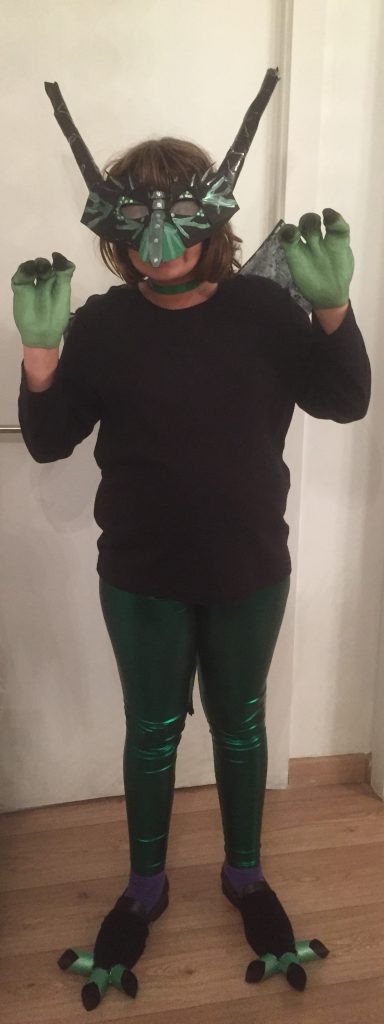
ROAR! 












